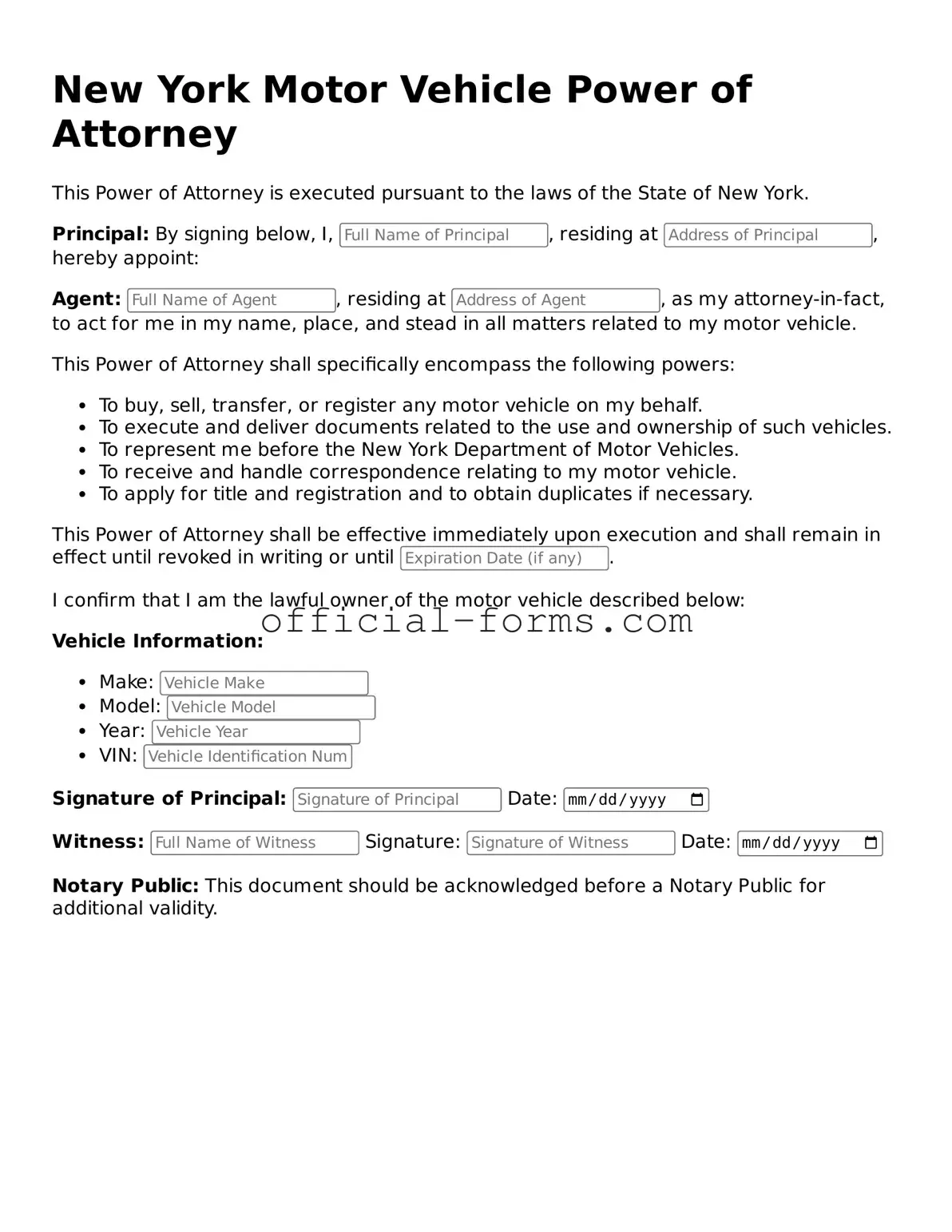Official New York Motor Vehicle Power of Attorney Document
The New York Motor Vehicle Power of Attorney form is a legal document that allows one individual to authorize another person to act on their behalf regarding motor vehicle transactions. This form is particularly useful for individuals who may be unable to complete these tasks themselves due to various reasons, such as being out of state or having health issues. By using this form, you ensure that your vehicle-related matters are handled efficiently and in accordance with New York state laws.
Open My Motor Vehicle Power of Attorney Now
